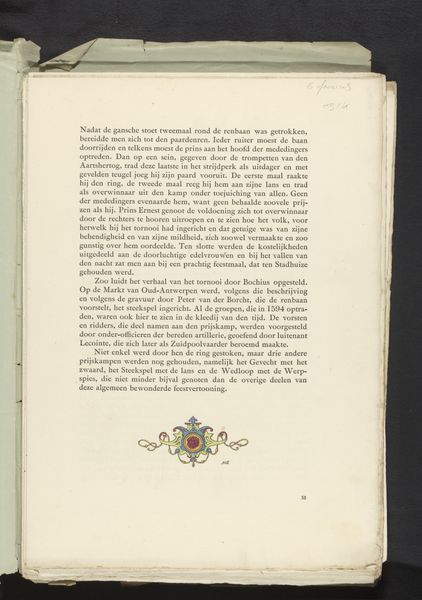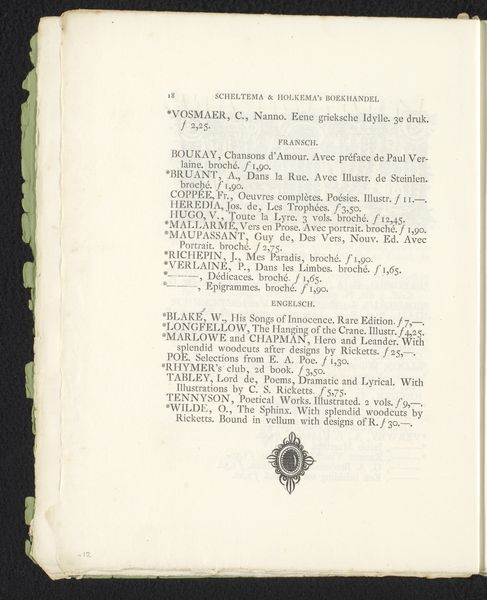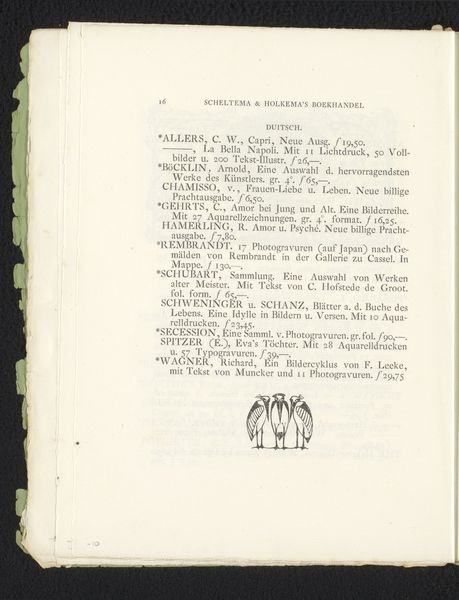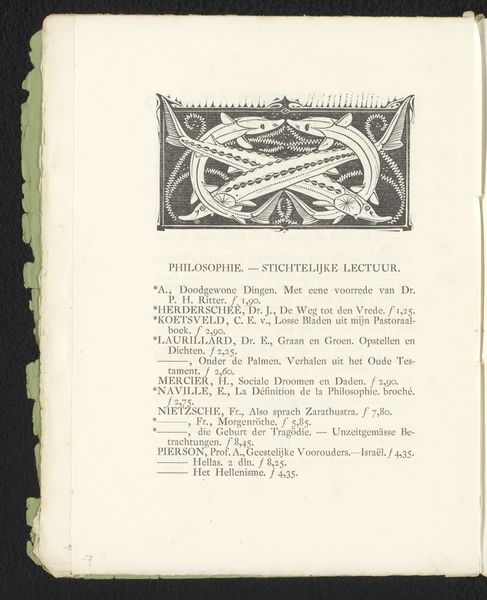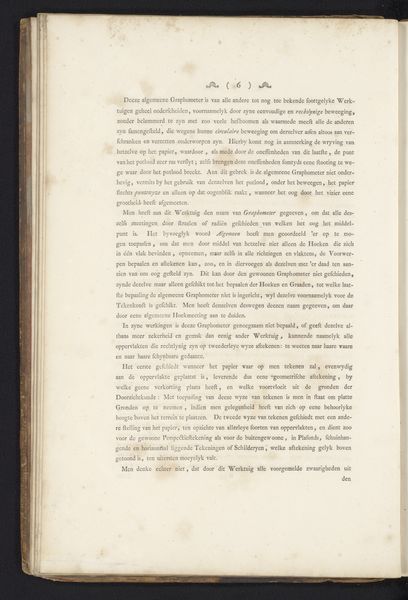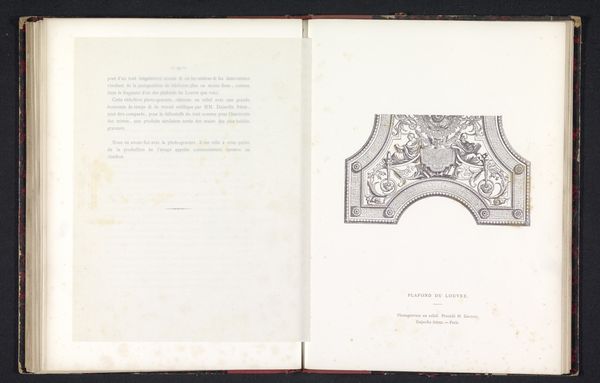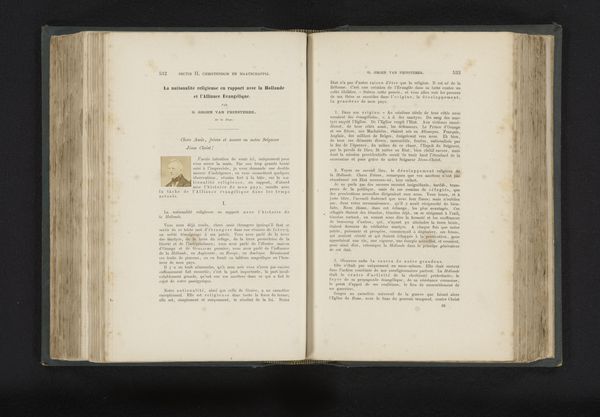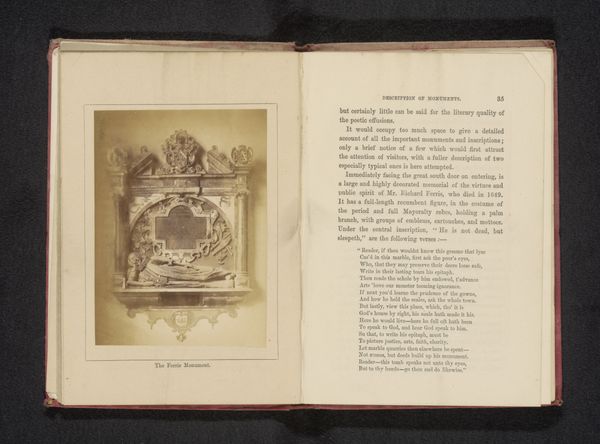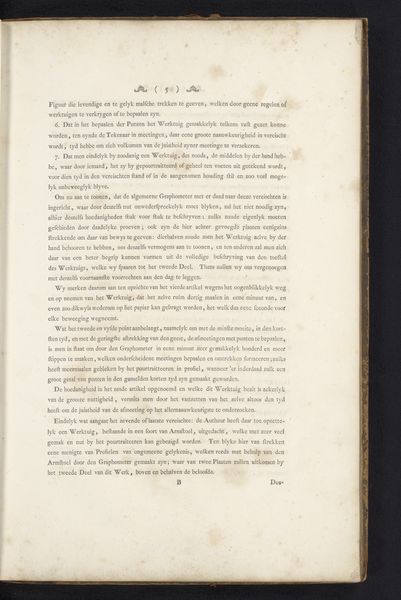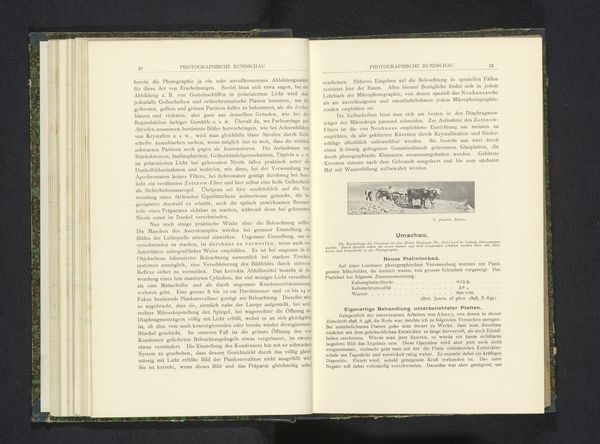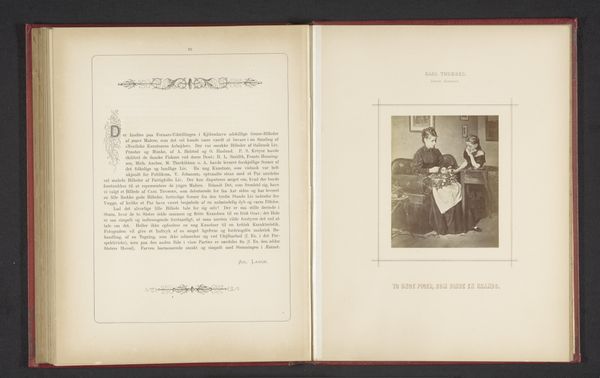
De wijk Oud-Antwerpen in de wereldtentoonstelling van 1894 / in beeld gebracht door Frans van Kuyck; beschreven door Max Rooses 1894
0:00
0:00
graphic-art, print, typography
#
graphic-art
# print
#
typography
#
decorative-art
Dimensions: height 468 mm, width 325 mm, thickness 10 mm
Copyright: Rijks Museum: Open Domain
Curator: Let's examine this illustrated page. It comes from "De wijk Oud-Antwerpen in de wereldtentoonstelling van 1894," showcasing the old Antwerp district at the World's Fair that year. Frans van Kuyck created the image, complemented by text from Max Rooses. It incorporates graphic art, printing, and typography elements. Editor: My first impression? This evokes a feeling of archaic charm. The elaborate ornamental cartouche at the bottom, with its masked figure, whispers of civic pride and perhaps a hint of satire. Curator: The printing process is intriguing here. Look at the clear distinction between the typeset text and the color illustration. It makes me consider the division of labor, likely requiring collaboration between the printer, the illustrator Van Kuyck, and even Rooses, as the writer. The whole fair itself was a large exercise in the division of skilled and unskilled labor to achieve complex spectacles, and the book acts as an accessible souvenir. Editor: The central figure in the cartouche holds so much symbolic weight. Is it meant to be a specific historical person, or does it represent a general ideal of the Antwerpian burgher? Note the flamboyant, almost theatrical, collar, it signifies a sort of controlled folly. I am compelled to consider it a cultural commentary, referencing traditions and aspirations while the image serves almost as a corporate or social logo. Curator: Precisely! The fair itself was about showcasing Antwerp’s economic and cultural might. The inclusion of ‘old Antwerp’ is significant – reminding us of a constructed authenticity sold as experience. Mass production and traditional symbols of burgher identity combine in this unique artifact, ready to be purchased by people during their day in a staged environment. Editor: It also tells a compelling story of Antwerp's past while engaging with a larger societal and cultural moment through this unique artistic representation. A microcosm contained and framed within an open book to remember a constructed micro-town at an exhibition. The cultural memories it holds are now, even more intensely, embedded in time. Curator: So true. Ultimately, this isn't just an image; it's a physical document representing the era's ambition and material circumstances of making visual culture. Editor: Indeed. The imagery prompts a deep look at what endures, morphs, and transforms in how societies visually represent their past.
Comments
No comments
Be the first to comment and join the conversation on the ultimate creative platform.
